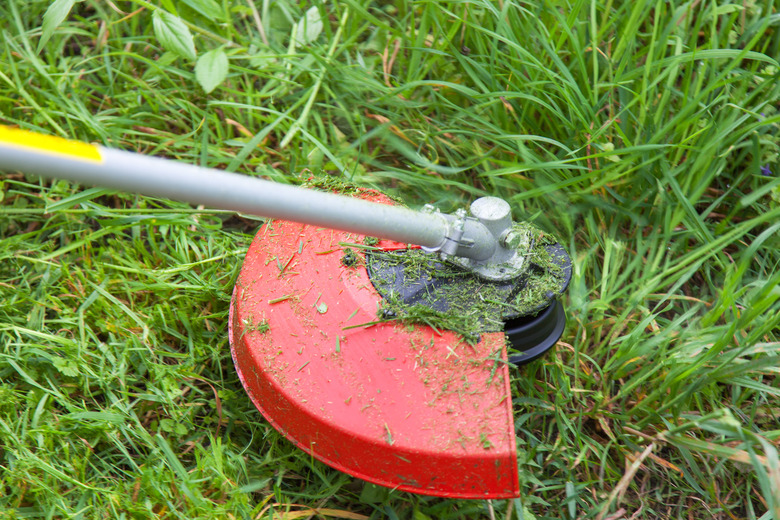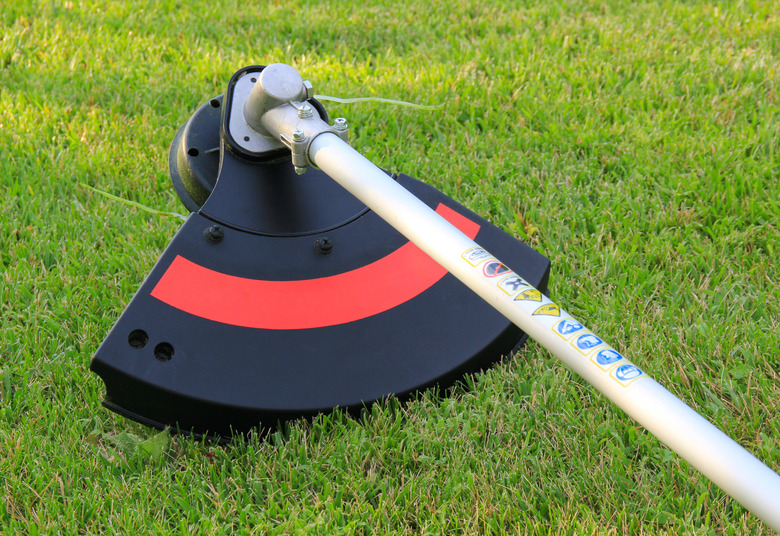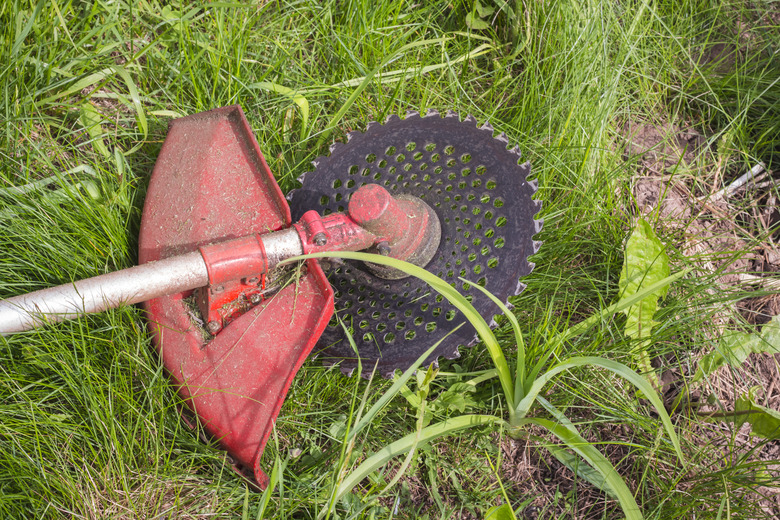A Homeowner's Buying Guide To String Trimmers
A string trimmer can help keep a lawn healthy and attractive throughout the season, buzzing off unsightly weeds and keeping the grass line straight and even. As with most outdoor power equipment, homeowners have the option of buying a corded electric string trimmer, a cordless model or a gas-powered tool. String trimmers also offer the choice between a straight-shaft or a curved-shaft tool.
Most homeowners can use a string trimmer, sometimes called a weed whacker, as part of their lawn care arsenal because a lawn mower cannot reach every blade or clump of grass that needs to be cut. Grass that grows along a fence or wall is usually unreachable with a mower, but it is an easy task for a string trimmer. The same is true of a border around plantings that requires a delicate touch. Some homeowners use a trimmer as an edger to cut a clean line between the lawn and a paved surface.
Corded Electric String Trimmer Basics
A corded electric string trimmer is a good option for someone with a small yard. A corded trimmer starts immediately and keeps running as long as there is electric power. An electric string trimmer runs on typical household current, so you can plug them into any 15- or 20-amp circuit. Aside from changing the cutting line when necessary and keeping the tool clean, there really isn't any maintenance.
They are also extremely light when compared to cordless or gas-powered trimmers, and they are the least expensive option. A corded model can cost between $50 and $100. In general, they have the least amount of power when compared to the other types, but for most string trimmer jobs, they can get the job done.
The main drawback is, of course, the extension cord. You have to lug it around the yard while using the electric string trimmer, which means your working area is confined to the length of your power cord — and the fact that it can get annoying to ensure you're not tripping over it the entire time you're working.
Cordless String Trimmer Basics
Cordless tools are the fastest-growing segment of the string trimmer market. People like the convenience of popping in a rechargeable lithium battery, pushing a button and going to work.
String trimmer power for cordless models ranges from 20 to 80 volts. The higher the voltage, the more cutting power and run time. The tools start instantly, do not emit harmful fumes and are quieter than gas-powered models (which your neighbors will be thankful for).
The higher voltage also means a higher price. In general, cordless string trimmers range from about $60 to $200, with the higher-priced models featuring more power.
Run time varies from model to model, but expect to be able to use the tool for about 30 to 45 minutes on a charge. Many people purchase two batteries so that one is always charging while the other is in use. If it is possible to share batteries, consider a tool from the same manufacturer of a cordless tool you already own. Be aware that many cordless string trimmers are sold without a battery, which means you have to purchase the battery and charger separately.
Gas-Powered String Trimmers
Gas-powered string trimmers are a good choice for professional landscapers and many homeowners. In general, they provide the most power of all types of string trimmers. A gas-powered string trimmer can have either a two-cycle or four-cycle engine; these are sometimes referred to as two-stroke or four-stroke engines.
A two-cycle engine produces power for the motor in two strokes of the piston. A four-cycle engine produces power in four strokes. A two-cycle string trimmer is usually less expensive than a four-cycle model. It is a simpler engine that is easier to maintain. It's usually lighter than a four-cycle trimmer, which can be important for a tool that you must carry around to use.
A two-cycle motor does not have a separate lubricating system as the four-cycle engine does. That means you have to mix the oil with the gasoline in a two-cycle trimmer to keep the engine from seizing up. The manufacturer of the tool will indicate the ratio of gas to oil. It also means you don't have to change the oil as you do with a four-cycle engine with a separate lubricating system. Two-cycle engines usually pollute more than four-cycle models.
Gas string trimmers range in price from about $100 to over $300 for professional-grade models. Fuel tanks can hold between 12 to 24 ounces of gas.
String Trimmer Designs
String trimmers are available in either straight-shaft or curved-shaft designs. Personal preference will determine which is better for you. Straight-shaft trimmers do a better job of reaching under obstructions, such as a low deck. Many tall people find them more comfortable to use. Depending on the tool, curved-shaft trimmers have better balance, and they can get into tight spaces that may be awkward for a straight-shaft tool.
It's best to try out both types before making a decision. String trimmers can weigh from 9 to 15 or more pounds, so they can give your arms and shoulders a workout. Some models let you adjust the length of the shaft for improved comfort.
Many trimmers can accept attachments that allow them to do more than slice through grass. Some of the popular attachments include lawn edgers, hedge trimmers, pole saws, rigid-blade brush cutters and leaf blowers. Not all trimmers can be converted with an attachment, and usually, the attachments must be from the same manufacturer as the original tool.
String Trimmer Operation
String trimmers have cutting widths of 12 to about 15 inches depending on the tool. Because you work in small, defined areas, cutting width for trimmers probably isn't as important as cutting width for a lawn mower. What is important is the type of monofilament line that does the actual cutting.
Most trimmers are designed to handle one type of line. The most common sizes are 0.065 to 0.085 inches in diameter. This is usually fine for most residential yards, but lines up to 0.110 inches and more are available for very heavy work. The majority of string trimmer lines are round, but there are also square and multisided lines for cutting through heavy weeds and brush.
There are different cutting head configurations. Some models use a single cutting line, but others use two cutting lines. Some models require that you manually wind the line in the cutting head, others have automatic winding and others let you replace an entire spool of line at once.
There are also different mechanisms for replacing worn-out lines with new ones. Bump-feed tools require that you tap a spring-loaded button on the ground to advance a precise amount of new line. Other models advance the line automatically when it is needed. Fixed-head tools use a length of line that is locked in place. When it wears out, the line must be replaced manually.


